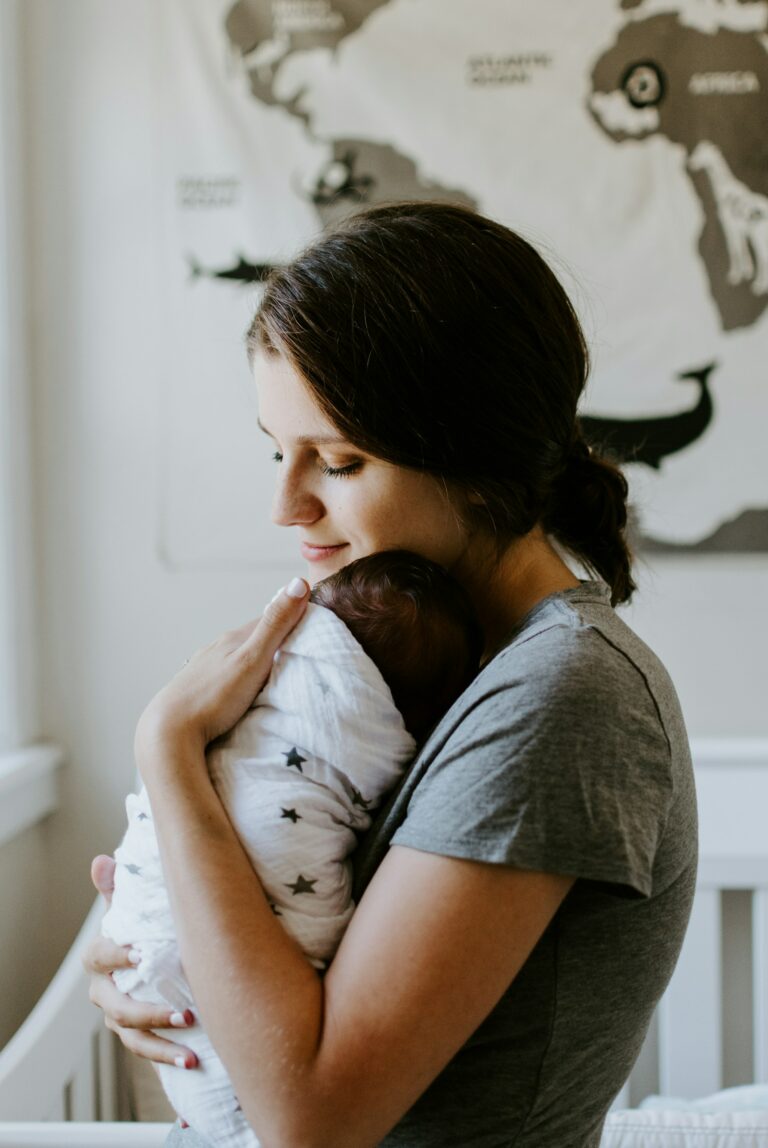Struggling with the unpredictability of nighttime awakenings? Wondering why your child slumbers through thunder but you jolt awake at every whisper? Or perhaps mornings resemble a sluggish marathon as your household battles sleep inertia. The science behind the light or heavy sleeper phenomenon holds keys to improved rest, calmer mornings, and more harmonious routines for parents and children alike. Why do some family members wake to the softest creak, while others are unmovable until the sun is high? Medical studies have unraveled the influences of genetics, sleep architecture, and environment—providing parents with practical strategies for restful nights and energetic days. Expect insights on brain activity, age-specific sleep needs, and actionable advice tailored to every sleeper in your family.
What Does It Mean to Be a Light or Heavy Sleeper?
Are you a sentinel, roused at the faintest sound? Or more akin to a hibernating bear, impervious to doorbells and thunderstorms alike? This contrast springs from the concept of arousal threshold—the degree of stimulus required to wake a person. Light or heavy sleeper is not just a personality quirk: it’s a medical reflection of sleep stages and brain patterns.
Light sleepers cycle more frequently through shallow NREM sleep. Their sleep is fragmented, easily disturbed by noise, changes in light, or subtle movement—a simple cough or a child’s restless turning can shatter their rest. Deep, restorative phases are sparse, leading to complaints of morning fatigue or trouble focusing as the day unfolds.
Meanwhile, heavy sleepers—characterized by a high threshold to environmental triggers—spend longer in slow-wave sleep or deep NREM stages. They are buffered by sleep spindles, bursts of neural activity that shield the brain from interruptions. Heavy sleepers often awaken groggy (an effect called sleep inertia), sluggish to process alarms or morning commotion. Neither sleeper type is inherently advantageous; each brings strengths and vulnerabilities to family life.
The Physiology of Sleep Sensitivity
Sleep Cycles: The Interplay Between Depth and Responsiveness
Every night, the human brain journeys through a recurring series of sleep cycles—about 90 minutes each, wandering from light NREM to deep NREM and finally to REM (rapid eye movement) sleep. Light or heavy sleeper status emerges from the relative distribution of these phases.
- Light sleepers: frequent transitions, short spans in deep sleep, and a brain perpetually on alert.
- Heavy sleepers: extended periods in stages 3 and 4, protected by prolific sleep spindles, which act as a noise-canceling shield at the neural level.
Noise disrupts NREM stages 1 and 2 disproportionately. Intriguingly, REM sleep—often associated with vivid dreams—offers less protection in the latter half of the night. The precise choreography between these stages, plus fluctuations in arousal threshold, molds a person’s overnight vulnerability to disruptions.
Genetics, Age, and Health Influence Sleeper Types
The landscape of the light or heavy sleeper is partly written in our genes. Family studies and twin research underscore a strong hereditary component—not just in overall sleep duration, but also in sleep spindle density and arousal patterns. Have you noticed siblings who react oppositely to bedtime noise? Biology is at play.
Age dramatically shifts sleep rhythms: children, especially toddlers, exhibit robust deep sleep and high spindle counts, while the sleep of older adults becomes lighter, with frequent awakenings and diminished spindles. Health factors—pain, insomnia, medication, or neurodevelopmental differences—also tip the scales, destabilizing restful slumber and making some children or parents transiently lighter or heavier sleepers.
How Sleep Sensitivity Affects Daily Family Life
Cognitive and Emotional Consequences
Sleep fragmentation comes at a cost. Light or heavy sleeper tendencies ripple through daily life. Light sleepers, after a night of relentless arousals, often report diminished short-term memory, irritability, and lapses in attention—a pattern mirrored in children by mood swings and classroom struggles. Heavy sleepers, despite accumulating more deep sleep, can battle a foggy start to the day. Known as sleep inertia, this sluggishness may hamper decision-making, especially before school or critical activities.
Physical Health, Immunity, Growth, and Development
Consistent, deep sleep lays the groundwork for immune function and cellular repair. Disrupted or shallow slumber, as often occurs in reactive light sleepers, increases susceptibility to illness, slows physical recovery, and can impact a child’s growth trajectory. For parents managing recurrent awakenings—whether due to their own sensitivity or a child’s—chronic sleep loss has been linked to metabolic imbalances and even cardiovascular dysfunction.
Detecting Light or Heavy Sleepers in the Family
Signs and Practical Assessment Tools
Are you witnessing repeated awakenings or a child who springs out of bed at the faintest noise? Does someone in your home sleep undisturbed through commotion yet struggle to rise for school? These are hallmarks of light or heavy sleeper physiology.
Simple observation works wonders: note how each family member reacts to common overnight disturbances, and whether daytime fatigue or irritability follow. Keep a sleep journal, recording bedtimes, wake times, naps, and any episodes of night waking. Technology can assist—wearable trackers and smartphone apps provide insight into sleep depth, fragmentation, and duration.
Should persistent daytime sleepiness, loud snoring, breathing pauses, or notable behavioral shifts crop up—particularly in children—consultation with a sleep specialist is essential. Sleep disorders such as obstructive sleep apnea, restless legs syndrome, or chronic insomnia may masquerade as sleeping type, but require targeted medical or behavioral intervention.
Tailoring Strategies for Light and Heavy Sleepers
Sleep Hygiene and Environmental Adjustments
Every parent dreams of a peaceful night, but reality can be more complex. Light or heavy sleeper strategies diverge regarding environmental control:
For light sleepers:
- Invest in white noise machines to neutralize environmental sounds
- Use blackout curtains to maintain darkness
- Encourage gradual wind-down routines—reading, soft music, mindful breathing
- Keep electronics out of bedrooms and avoid caffeine in the evening
- Foam earplugs or comfortable sleep masks provide an extra layer of protection
For heavy sleepers:
- Place alarms across the room to force movement at wake time
- Experiment with sunrise simulation clocks (gradually increasing light mimics dawn)
- Immediate exposure to daylight and gentle stretching boosts alertness
- Schedule engaging, positive morning interactions for children—favorite songs, breakfast rituals
- Enforce consistent sleep and wake timings, even on weekends, to minimize sleep inertia
Managing Stress, Anxiety, and Family Sleep Schedules
Chronic stress and bedtime rumination heighten sleep reactivity—anxiety pushes both parents and children into lighter sleep patterns. Practice brief breathing exercises, gentle yoga, or physical relaxation techniques as a family routine. Reserve time earlier in the evening to discuss worries, so that bedtime is ring-fenced for calm.
Synchronization can be tricky in households with mixed sleeper types. A child who is a light sleeper may need a cocoon of quiet, while a heavy sleeper sibling barrels through the morning, impervious to gentle nudges. Open conversation, flexibility, and creative use of the home environment pay dividends. Shared bedrooms? Consider white noise or staggered wake times. Some families benefit from trialing different furniture arrangements or sleeping surfaces.
Can You Change Sleep Sensitivity?
The light or heavy sleeper trait is shaped by genes but influenced by environment and habit. Sleep experts emphasize that while fundamental tendencies may persist, families have the power to shift routines and lessen disruptions:
- Medical conditions can be addressed (apnea treated, medications reviewed)
- Environment may be modified for optimal comfort and sensory control
- Behavioral interventions—gradual bedtime fading, stimulus control—enhance sleep depth and continuity
- Even age plays a role; sleep typically becomes lighter in adulthood, yet parental advocacy can buffer this transition for children
Aim for improvement, not perfection. It is scientifically rare to completely dismantle one’s innate arousal threshold, but optimization delivers measurable gains in rest, mood, and health. Both light and heavy sleepers offer benefits: vigilance to children’s needs, or resilience in shared environments.
Sleep Disorders and the Light or Heavy Sleeper
Insomnia, sleep apnea, and restless legs syndrome are common nocturnal saboteurs, each increasing vulnerability to awakenings and reducing restorative sleep. Light sleepers with these disorders may become acutely sleep-sensitive, whereas heavy sleepers may miss their own symptoms—snoring, breathing pauses—or experience excessive sleep inertia.
In children, sleep disorders manifest uniquely: behavioral outbursts, declining school performance, or unpredictable nighttime wakings may signal an underlying medical issue. Early engagement with healthcare professionals restores not just sleep but overall family harmony.
Key Takeaways
- The distinction between light or heavy sleeper reflects a dynamic interaction of genetics, physiology, age, and environment.
- Sleep stages (NREM, REM) and neurophysiological phenomena like sleep spindles determine each person’s sensitivity to noise, light, and movement.
- Both light and heavy sleepers need tailored strategies—ranging from environmental controls to structured wake-up routines—to foster restorative sleep and vibrant family life.
- Persistent sleep issues or marked changes in a child’s mood, attention, or breathing during the night should prompt consultation with a sleep or healthcare specialist.
- A mix of observation, sleep tracking, and practical interventions empowers parents to optimize rest, mood, and development for every family member.
- For expert guidance, practical questionnaires, and ongoing support tailored to your child’s unique sleep profile, download the Heloa app—a powerful resource for families eager to nurture healthier, happier nights.
Each family’s journey with sleep sensitivity is unique, but science-backed adjustments and proactive parenting can transform nights of frustration into restorative, peaceful slumber.
Questions Parents Ask
How do I know if my child is a light or heavy sleeper?
It’s sometimes tricky to identify whether your child is a light or heavy sleeper, especially since every child’s sleep can change over time. You can start by observing how your child reacts to noise or minor changes in their environment during sleep—does a soft sound wake them easily, or do they continue sleeping even if it’s noisy around them? Noticing patterns over several nights can help. Gently tracking their sleep in a notebook, noting nighttime awakenings and how they wake in the morning, may also bring helpful insights. There’s no single test, so trust your observations and remember every child’s sleep journey is unique.
Can someone be both a light and a heavy sleeper at different times?
Absolutely, it’s normal for sleep sensitivity to shift at different periods of life. Stress, illness, growth spurts, or even changes in routine can make someone who is usually a heavy sleeper become more reactive, or vice versa. For children especially, stages like teething, starting school, or developmental leaps may temporarily affect sleep depth. Rassurez-vous, these changes are often temporary. A caring, consistent bedtime routine and gentle support can help restore healthy sleep when needed.
Is it possible for parents and children in the same family to have different sleeper types?
Yes—each person’s sleep profile is as individual as their personality. Genetics do play a role, but it’s completely normal for one parent to wake at the slightest sound, while their partner or child snoozes deeply. Siblings may also experience sleep very differently. If your household includes both light and heavy sleepers, it can require a bit of creativity to adapt routines and environments, but this diversity is entirely natural and manageable. Respecting each person’s needs can help everyone enjoy more restful nights.









